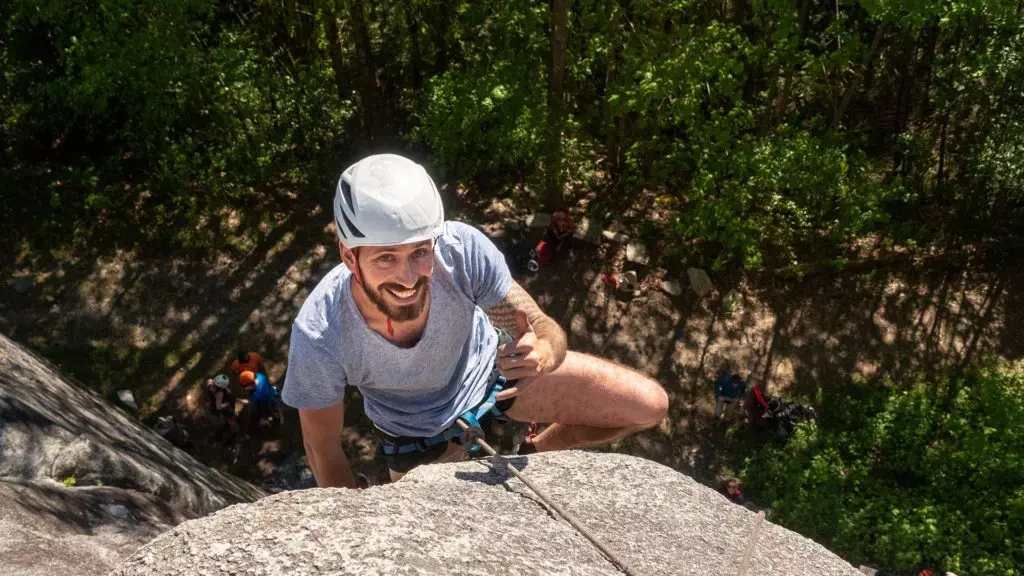Spring has sprung early on Canada’s West Coast. There’s still good ski touring to be had at the alpine elevations, yes. But with snow packs in the valley bottoms quickly disappearing, summer recreation sports are already kickstarting. Warm sunny days have dried out the crags and the climbers are already clamoring over the available routes. So to help you get fit and ready for summer, here’s our advice for an early start to rock climbing season.

Start with a proper fitness base
Base fitness is one of the most overlooked key components of many sports, including rock climbing. At the start of the rock climbing season, you need to condition your body and climbing muscles. With the help of some base fitness exercises, you can strengthen your stabilizing muscles which will help in staying injury-free. Base fitness is the foundation of your seasonal goals, so don’t rush through it in a hurry to start cranking on the higher level routes. Give yourself 2-3 weeks minimum.
Some examples of good base climbing fitness:
- A diligent warm-up routine of 10 minutes minimum. Jumping jacks, burpees, skipping rope, anything to rapidly raise your heart rate followed by light stretching and some easy climbing.
- Core strength. This is what will hold you on the wall, keep you moving efficiently, and isn’t all covered by yoga and pilates. Check out Climbing.com’s 10 Exercises for a Complete Core for some great training exercises.
- Try out ARC Training. This is to get your body and muscles trained and conditioned to climbing movement. The goal of ARC Training is to keep moving, without focusing on grades, routes or problems. It’s about dialing in basic movement and keeping those moves as efficient as possible. Try timing your roped climbs or easy bouldering routes. Improved speed means improved efficiency.

Start Small
Rock climbing is a very demanding sport and regression in skill and strength is common when you take a break from it. Maintaining mental and physical strength over the long Canadian winter is not easy, so when you start climbing again you can’t expect to be sending the same routes you were ticking off last summer at your peak condition.
Patience is a virtue. Don’t let the frustration of regression get to you. Measure your progress by the hours spent on the wall instead of the grades. If you work hard at it, your climbing mojo will be back for rock climbing season in no time.
Mind the complacency
If you’ve been climbing indoors at the gym for the past six months, the sudden rush of sunny weather, blue skies and dry rock can mess with your judgment. Safe climbing is built on disciplined routine; clear communication between climber and belayer, second checking knots, safely judging rope distances. Don’t take shortcuts to save time, especially when you’re coming out of winter climbing hibernation. Take your time, bring your headlamp, and don’t stress about what hour you’ll arrive back at the car.
Other considerations
Spring is the time of ticks, so make sure to check yourself, your partner and your dog when returning from the crag. Weather can always change rapidly, but sunny days in spring can quickly turn cold with overcast or after the sun sets. Climb in a pair of stretchy pants, bring gloves and a toque and (second reminder) always have your headlamp in the bottom of your pack.
On certain rock, winter freezing can cause some holds to fracture or dislodge completely. If you’re in the first group of people to climb the crag this spring, watch for loose rock and wear your helmet. And remember to bring along a wrench to check those bolts.
It won’t be long before summer is in full swing. Be ready for it and enjoy the rock climbing season!
Written by: Vince Shuley



